 Fortians are saying, “enough is enough”. For four months, Galle Fort locals and shops had to bear the brunt of a short-sighted traffic plan. I travelled to the Galle Fort to find out how the one-way traffic system has made daily life a living nightmare for the people in the Fort.
Fortians are saying, “enough is enough”. For four months, Galle Fort locals and shops had to bear the brunt of a short-sighted traffic plan. I travelled to the Galle Fort to find out how the one-way traffic system has made daily life a living nightmare for the people in the Fort.
Nassar Hussain, a prominent Galle Fort activist, acted as my tour guide. We started at Galle Fort’s main entrance, also called the 1873 entrance. I noticed one lane cordoned off with faded plastic barricades tied with coir rope. The barricades looked unseemly and a trickle of cars and bikes exited through the driveway. As per a UDA survey done eight months ago, 6,000 vehicles enter the Galle Fort every day.
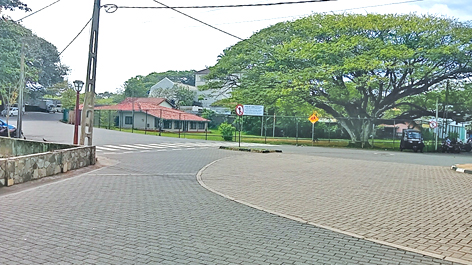 Through the stone tunnel you find Galle Fort’s first intersection; Church Street towards the East, Rampart Street to the West and Lighthouse Street to the South. Visitors are welcomed with ‘no entry’ signs at each of these streets, adding to the confusion. Hussain said that driving anywhere directly in the Galle Fort is now impossible and residents and visitors must first exit the Galle Fort through the 1873 tunnel, drive around Baladaksha Mawatha, re-enter through the old entrance, drive along the ramparts and turn right at a specific street to get to their destination.
Through the stone tunnel you find Galle Fort’s first intersection; Church Street towards the East, Rampart Street to the West and Lighthouse Street to the South. Visitors are welcomed with ‘no entry’ signs at each of these streets, adding to the confusion. Hussain said that driving anywhere directly in the Galle Fort is now impossible and residents and visitors must first exit the Galle Fort through the 1873 tunnel, drive around Baladaksha Mawatha, re-enter through the old entrance, drive along the ramparts and turn right at a specific street to get to their destination.
Huge detour
This frustration was echoed by Charith De Silva, proprietor of the Fort’s famous Ayubowan Cafe. When he has to send alms to the bhikkhus at the Sri Sudharmalaya Temple near Rampart Street, he can’t just drive down Lighthouse Street; turn a left at Pedlar Street and get there. “I have to drive outside the walls, re-enter and make a huge detour to get to the temple. In fact, the Fort’s entrance is now it’s reardoor”. In addition to the one-way system, De Silva also said that locals are also finding it difficult to park their cars when visitors take up parking spots along Fort’s narrow cobblestone streets. “It’s unfair when we (residents) are forced to park in paid lots,” he said.
The one-way plan was mooted by the former Governor of the Southern Province, Lakshman Yapa Abeywardena, which was implemented on June 1.
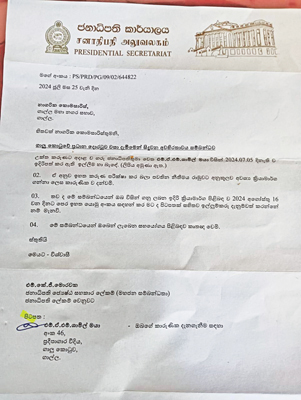
Letter sent by the
Presidential Secretariat
The former Governor said the decision was made after taking into account the traffic jams in the Galle Fort due to the heavy influx of vehicles.
Hussain however, said that the former Governor did not give an ear to any of the residents before he made this decision. “What we know is this. He went for a walk along the ramparts and asked a few visitors about what they thought about the traffic issue and then decided to make it one-way”, he said.
I spoke to several trade union leaders on what they thought about the new Galle Fort traffic plan.
Pushcart businesses
Saman Priyantha, chairman of the Fort Mobile Vendors’ Association said the biggest problem to pushcart businesses in the Galle Fort was the one-way system. Priyantha’s stall is near the crest of the Clock Tower Hill and he said that no customers were coming his way. “All vendors benefited when the traffic was distributed equally,” he said while pointing at the main intersection that is devoid of traffic.
“We met the (former) Governor several times and he promised to help. The Police have also not taken action. We’ve even appealed to the Governor in writing before he left office but he never took any action despite guarantees to do so”, they added.
Meanwhile, the Galle Fort United Three Wheelers Welfare Society Secretary, Priyantha Pathirana said there were several issues faced by three wheeler drivers due to the one way traffic plan. “The trip that usually takes half a kilometre now takes over 1-2 kilometres. We are spending more on fuel and customers are finding it difficult to negotiate fares. Foreign tourists assume that they are being scammed when they see tuk tuks drive around instead of taking them directly to where they want to go”, they said.
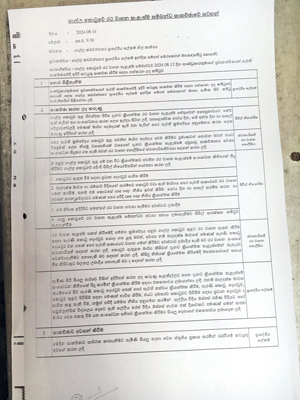
Minutes of the
August 16 meeting
Pathirana said that it is a very short-sighted plan and added that various Fort-based unions and Associations have been lobbying the authorities to revoke the one-way system for a long time. He said that there is a huge lapse on the part of the local Police and Municipal Council.
I called the Galle Municipal Council and they advised me to speak to the Police regarding the matter.
C.I. Wijesuriya is the Galle Police traffic OIC. He said the locals are biased about the issue. “Anybody can see that there are no traffic jams when vehicles go around the Fort”. While he admits that locals are unconvinced, he said the one-way plan is systematic and has seriously reduced congestion. “The Urban Development Authority (UDA) also made a plan. And if that is better, then that should be implemented,” OIC Wijesuriya said.
Political opposition
Anura Madawala is the UDA’s Planning Director for the Southern Province under the Deputy Director General (planning) Zone II.
“The UDA and University of Moratuwa and all stakeholders, drew up a traffic plan. A plan such as this takes time to implement, it doesn’t work instantly. We also identified different phases and presented it to the Regional Coordinating Committee. However, we were met with huge objections not to put the traffic plan into action’, he said.
According to our proposal the Samanala playground was to be used as a temporary parking lot and only essential vehicles will be permitted to enter the Fort, including those used by the hoteliers, office workers and residents. We also proposed a fee for those who wish to take their cars inside. But all this was scrapped because it was said that there was a pre-existent traffic plan which turned out to be the one way system”.
The UDA drew up their plan with the input of residents, but was met with political opposition, he said.
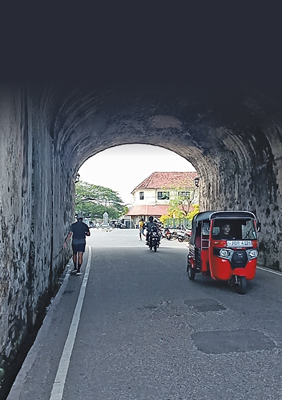
Galle Fort’s main entrance
In the meantime, those owning businesses on the West side of the Galle Fort said they have also taken a hit due to the one-way traffic plan.
The owner of Cafe Hula Hula said they used to have many people on foot. “These ramparts here have the longest sunset view. With the one-way system, most of the visitors come through the old entrance, stick around the East side where they eat, shop and do their sightseeing. Rarely do they come out here. Most of the people who come have already wined and dined when they get here so I have lost around 70 percent of my usual income. We usually get a good number of people during the weekends but not anymore”, he added.
And just like Priyantha, the cafe owner said a system that distributes traffic equally to all parts of Galle Fort is what was needed.
But it’s not just the little boutiques and cafes that are on the verge of shutting down. A leading wellness brand opened one of its most successful branches at the Galle Fort back in 2015. Satisfied with its success, the corporate opened two other branches and strategically placed one near the Clock Tower Hill, but the store wasn’t successful as projected.
Constant lobbying
In spite of meetings and constant lobbying, this unsuccessful traffic plan has not been addressed in any tangible manner.
Back in July, one Galle Fort resident wrote to the President’s office seeking immediate redress. Likewise, on July 25, the Presidential Secretariat wrote to the Municipal Commission to investigate the matter and provide solutions within the legal framework and to provide a feedback on the action taken before August 16 while also informing the petitioner.
On August 12, the Governor called for a meeting at his office with Galle with Fort residents, businesses along with the Galle Heritage Foundation, UDA, Archaeology Department, Divisional Secretariat, Engineering Department and the Road Development Authority. Alternative routes were presented and an action-committee comprising residents and relevant Government institutions headed by the Divisional Secretary was formed.
A general meeting was called by the Galle Heritage Foundation on the August 13 at the Galle Fort temple on the request of the then Cultural Minister Vidura Wickramanayaka, who was informed of grievances by former Galle MP Chandima Weerakkody.
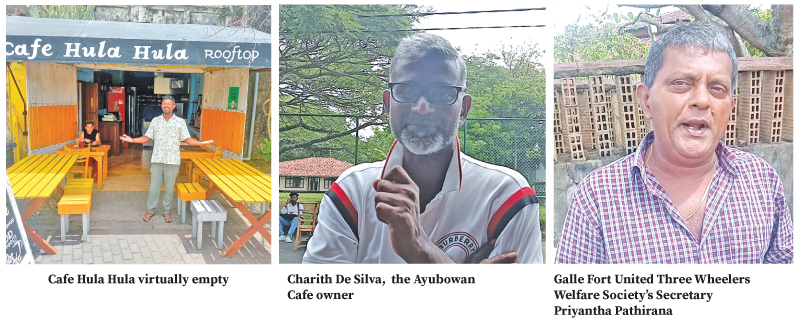
On August 16, a meeting was summoned by Indika Sampath Samarakoon, – the Galle Kadawathsara District Secretary with the committee appointed to discuss the Gall Fort traffic plan. The discussion was overseen by the Divisional Secretary. Civil representatives said residents, businesses, schools and State institutions have been severely hindered by the one-way plan and demanded amendments while pointing out that the only time there are traffic jams was on Poya days, weekends and during school hours. The OIC Traffic Police said the previous system was inadequate to deal with vehicular congestion inside the Fort and assured that adjustments could be discussed.
The Fort representatives presented an alternate traffic-plan which was approved unanimously at the general meeting held on August 13 and to reserve the right for residents to park their vehicles in front of their homes as they are not allowed by law to have garages.
According to sources, the Divisional Secretary in his minutes of the meeting presented to the Governor forwarded an alternate traffic-plan map with the concerns of the Galle Traffic OIC.
The Galle Police Headquarters Inspector (HQI) called for a residents’ general meeting at the Galle Police auditorium through the Galle Fort Civil Protection Committee on August 29. After taking into consideration all concerns, the HQI assured that he would implement the traffic-plan map that was proposed by residents, businesses and relevant state institutions of Galle Fort. The appointed committee forwarded the letter with documents the very next day.
Citizen’s victory
At the Galle Municipality Council Traffic Committee meeting last Wednesday (2), a new traffic plan with four one-way routes was presented to the Galle Police Traffic OIC and HQI. The Police officers promised to implement the amended plan in three days. As of Friday (4), traffic have reverted to the pre June 1 system, with barricades and no-entry signboards removed by Police before the new plan could be implemented. “This small victory should solely be credited to the people of Galle Fort,” Hussain said.









